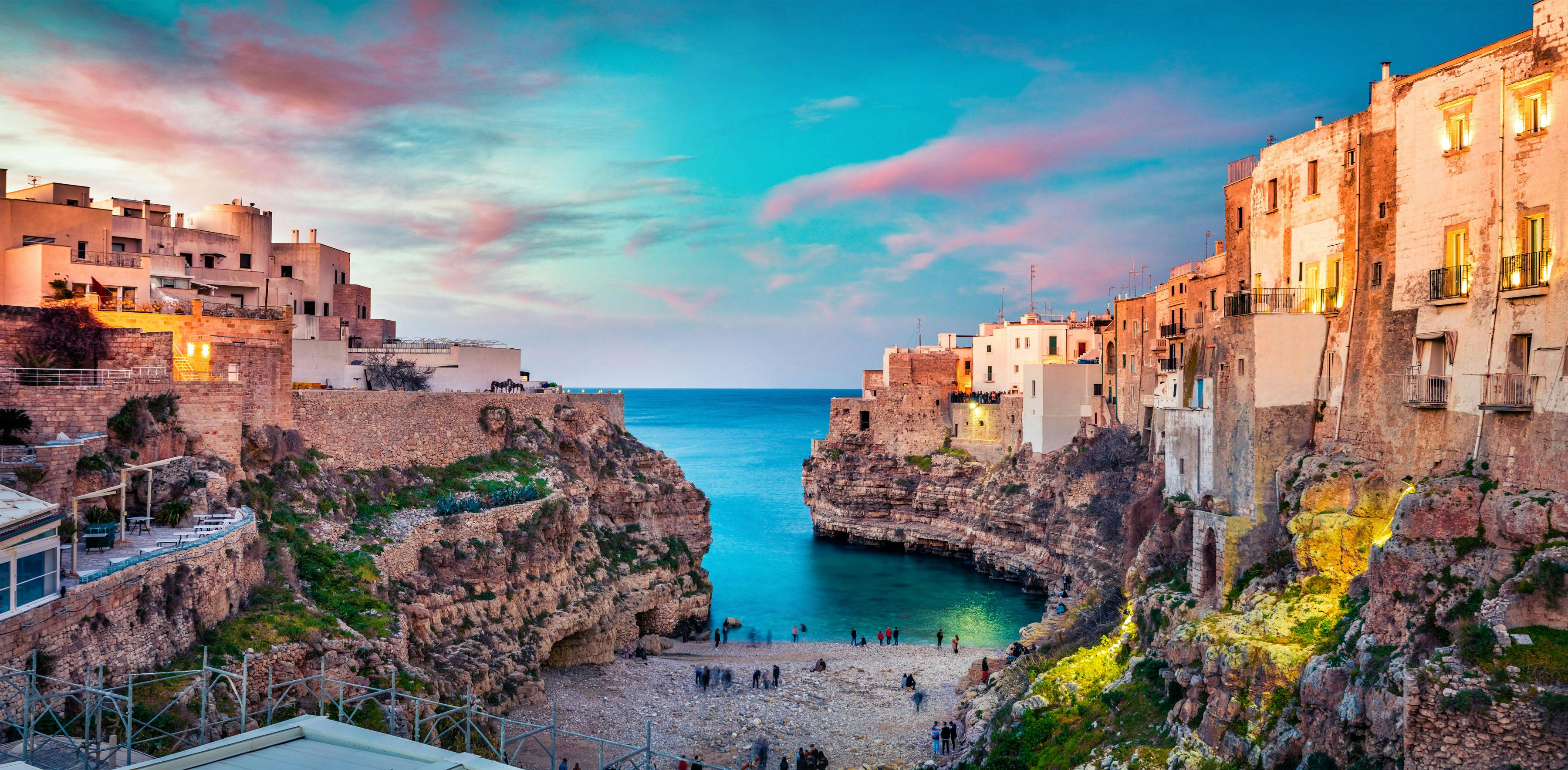Things to Do in Puglia, Where Detours Can Become Destinations
It’s tough when your days begin with decisions like these: Do we drive north toward the Adriatic or south toward the Ionian Sea? Shall we have pranzo (lunch) in a hill town or along the shore? This was how the days began for my husband and me at the Bar Colucci — tucked on the piazza of Crispiano, a quiet town in the heart of Puglia.
It didn’t take long for Bar Colucci to become command central, the hub of our wheel as we explored the things to do in Puglia. We liked to start our days there, sipping espresso, watching women, chatting with friends until it was time for lunch, the local free-ranging dogs going in and out, and clusters of old men, who’d been friends since boyhood, shouting about a soccer match.
We hadn’t planned to travel to Puglia that summer. In fact, we hadn’t planned on going anywhere. I was going to clean my basement. But then I got this email: “House exchange with Puglia.” We’d done house swaps for years, but they’re a lot of work and I’d pressed the pause button. Then I saw the pictures of the fortified farmhouse, or masseria, painted pure white, encased in looming walls, the living room with its frescoed wall, the courtyard and orange and lemon grove out back.
This was not just a house but a small sun-drenched village all to ourselves.
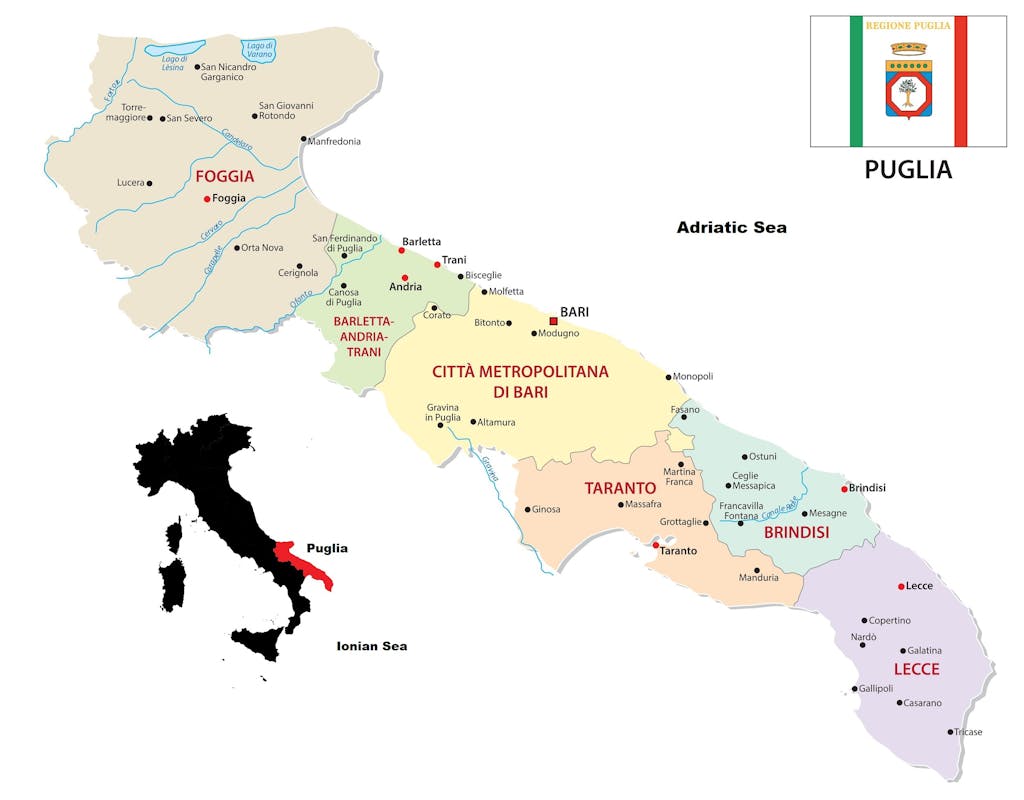
Puglia is the heel of the boot of Italy — the toe belonging to Calabria and the arch to Basilicata. I’d never been, but I knew it was mostly off the beaten track and without any touristy vibes. What I love about Italy is the authentic, the home-grown and homemade. So we went.
Silversea’s Mediterranean cruises often stop in Bari, an Adriatic port and the capital of Puglia, and your day there will give you an introduction to the region. We flew to Rome and rented a car and drove there, although a train is a great option (and as little as $20) if you’re either embarking on or returning from a Mediterranean cruise. We spent our first night at an inn near Naples, where somehow we found ourselves drinking and dancing at someone’s wedding. The next morning we were on the autostrada, heading due south to the very end. Six hours and a few detours later, we were driving up a rutted dirt road, past olive groves, through the gates of a fortress for the next 10 days.
No plan turns out to the best plan
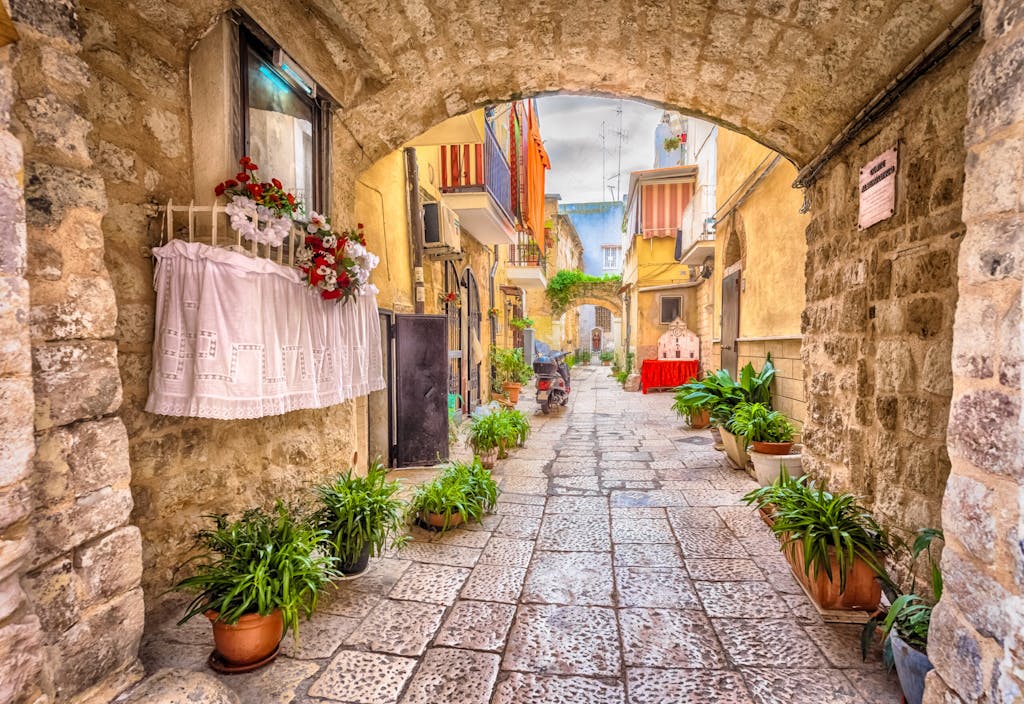
That first day we drove north. A few weeks before, when my husband was unloading pineapples at our food coop, he mentioned to a guy sorting melons that we were planning to travel to Puglia. The guy stopped and said, “Oh, you have to go to Polignano a Mare.” Polignano (see photo at top of the page) is on the rocky Adriatic Coast, so we took the back roads heading to the sea.
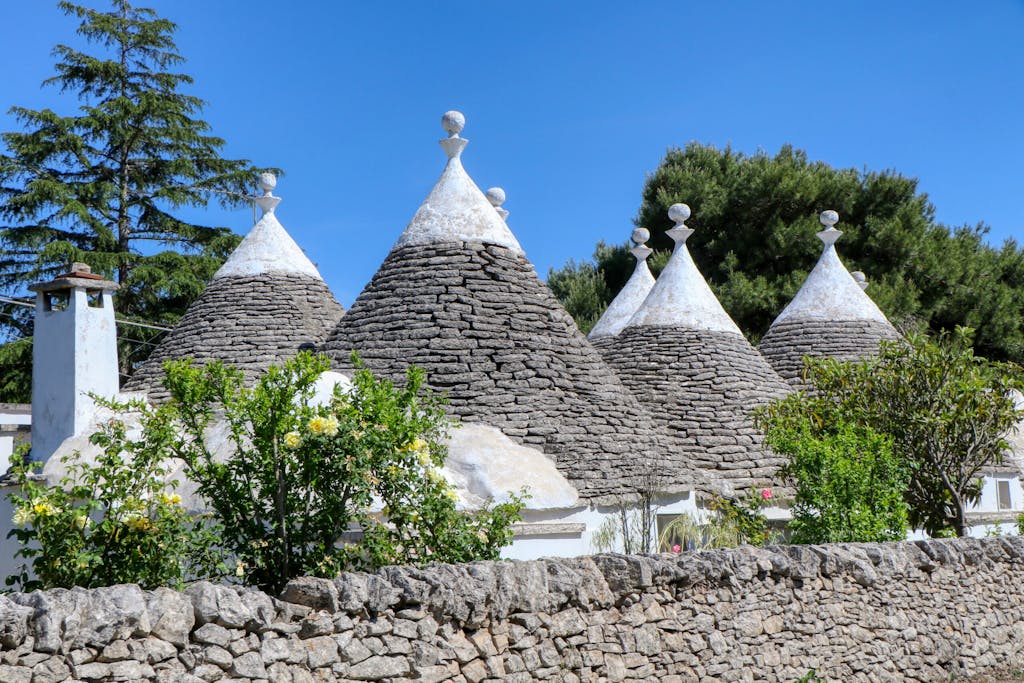
There are many ways to see the area, and equally many things to do in Puglia. You can do an easy five-day amble beginning, say, in Bari, following the sea to Brindisi, going inland to Lecce, down through Salento and circling back by Taranto. But we tend to ramble and loop around, and often our detours become our destinations. And it is on the back roads of Puglia, especially as one drives from, say, Taranto toward Bari driving through Martina Franca, past Alberobello (which is worth a stop but is definitely on the tourist trail) that you will encounter the strange conical houses called trulli.
Much of this part of Puglia resembles Middle Earth, and the houses look as if they should be inhabited by hobbits. The Murgia, where this part of Puglia is, is a rocky, forbidding land. It seems as though the Pugliese, much like the Irish, dealt with their excessive supply of stones by building walls and houses.
No one knows for sure the purpose of their odd structures — except initially that they weren’t homes. One theory has it that they were hastily built “sheds” that could be quickly dissembled if the tax collector arrived and then reassembled. Whatever their origins, trullis are now the Puglia equivalent of a Brooklyn brownstone. We made our way through this enchanted land of trulli, through the roundabouts along twisting roads until we caught our first glimpse of the sea.

The Adriatic, unlike the Ionian, I would soon learn, has a rocky coast and often offers dramatic vistas. We parked and walked until we came to an old Roman bridge. Below in a narrow cove, swimmers splashed in the sea.
But first things first. We enjoyed a seafood lunch at the Ristorante Meraviglioso which lives up to its name, then headed down the many steps to water, which looked ideal for a swim except for the stony bottom. No wonder I passed a guy selling river shoes on my way down. I went back and procured a pair, then made my way down the rocky shore into the water, and spent an hour gazing up at the ancient houses that border the cove as swallows dove all around me.
Heavenly food and wine
Because I think of myself as part-dolphin, I tend to gravitate toward the sea, so the next day our decision was simpler. Having already gone north, we headed south. We drove through fields of wheat until we reached the Ionian Sea, and it wasn’t long before we found the Canneto Beach Club. Here, for a few euros, you can get a nice umbrella and chair and have a very decent lunch. It also has a gorgeous pool if, for some reason, the warm, lapping waters of the Ionian don’t suit you. (There’s also a free public beach next door.) The Adriatic presents a rougher, rockier coast, but the Ionian is a pure sand bottom, and you might feel as though you could walk halfway to Sicily.
After spending several hours in the water, we made our way to Taranto, a rough port city that has the flavor of Naples but on a much less ramped-up level. It also has Museo Taranto, an excellent collection of Greco-Roman antiquities where we gazed in awe for several hours.
We had gotten a tip on a restaurant near the museum — the Gatto Rosso — but it was early, so we stopped in a bar near the water. As we sipped our rosé, a naked man walked out of his building and jumped into the sea. A few moments later, he got out and went home. Apparently he does this twice a day. After his spectacle, we walked back to the Gatto Rosso for dinner.
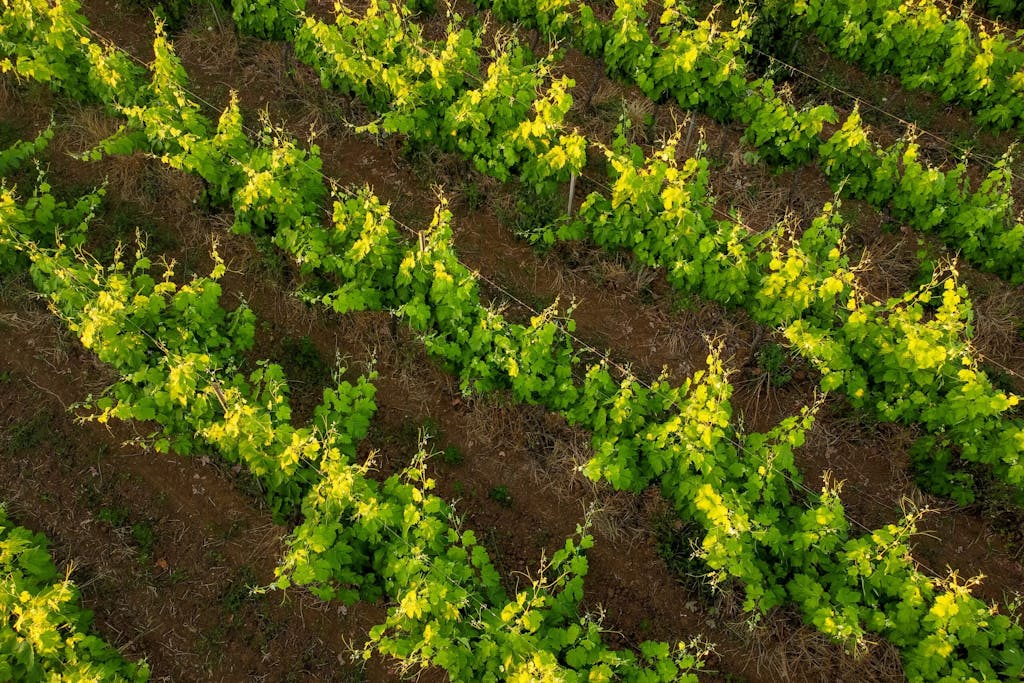
Let me cut to the chase here about food. The food and wine in Puglia are beyond heavenly — the orecchiette with tomato sauce and cheese (a local favorite), the Salento wines, especially the rosé. But the thing to eat if you are traveling in this part of the world and following the sea is crudo, or “raw.” Basically it’s Italian sushi. Except in Puglia, the chef has walked to the dock and picked out what appealed to him. And on a hot June day with a glass of chilled wine, you cannot go wrong.
If Italian sushi isn’t your thing, no worries. Between the savory tomato sauces that cook all day and the wines that come from this hot dry land, trust me, you’ll be fine. But, for me, that night after my day floating in the Ionian, it’s crudo I crave.
Each day, a discovery

Our days took on a rhythm of their own. The mornings at Bar Colucci, then off on an adventure. Some days we’d visit nearby towns, such as the elegant Martina Franca — a medieval town with excellent shops.
At night, it is beautifully illumined as its citizens do a passeggiata or dine in excellent restaurants such as Garibaldi, my favorite. Or we would drive up the winding roads of the whitewashed Locorotondo where, at the end of the trail, a wine bar sits, perched high above the valley. Below stretch miles of vineyards and trulli, and on our table sat a bottle of Calafuria, the Salento wine that won my heart.
We did a loop through Salento, stopping in Lecce to view its many outstanding Baroque churches, then down toward Gallipoli, and to Santa Maria di Leuca, where the Ionian meets the Adriatic. We spent a night in the town where there was a local festival that lasted well into the night. We hardly slept.
By the evening we were back in our little bar in the piazza with another tough decision. Do we try the homemade pistachio gelato or the strawberry? The dark chocolate or the peach? Or should we just take it home and savor before bed?
Mary Morris, a traveler most of her life, is a keen observer of life wherever she goes. She is the author of numerous books, including her travel classic, “Nothing to Declare: Memoirs of a Woman Traveling Alone,” and her recent “All the Way to the Tigers.” When she’s not traveling or writing, she lives in New York, where she teaches at Sarah Lawrence College.
Want to experience for yourself the many things to do in Puglia? Start by exploring these different Silversea Mediterranean cruises, as well as a Silversea S.A.L.T. excursion that focuses on the cuisine of Puglia.
